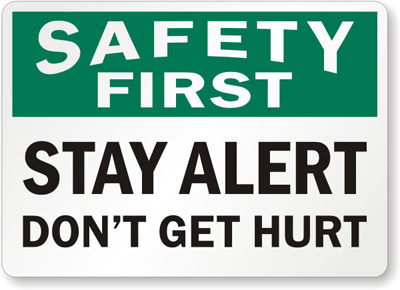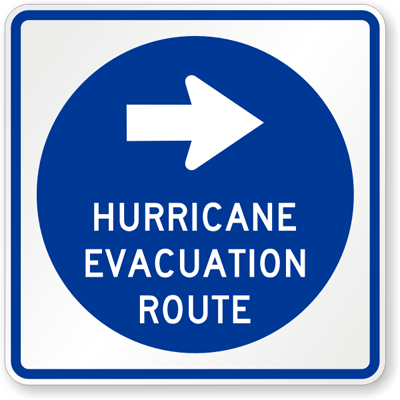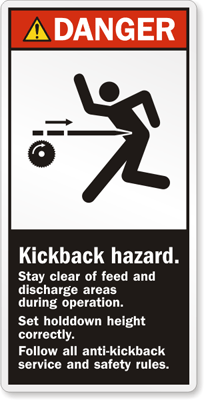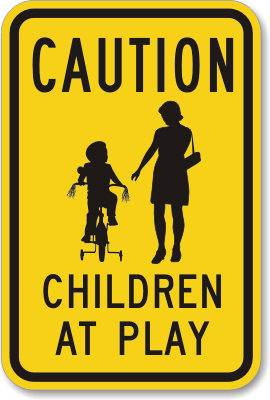Safety Tips for National Preparedness Month

Essential reminders, from MySafetySign.com.
September 7, 2012 — September is National Preparedness Month, and SmartSign has got you covered. In all disasters, survival happens at the collision of luck and preparation. Now is the time to take stock of all emergency plans, and to make changes where needed. By incorporating safety signs and procedures into ordinary tasks, injury can be averted.
Established in 2004 to encourage Americans to be more resilient in the face of a mass disaster, National Preparedness Month reminds us that emergency management should be standard practice – at school, home and business. The Federal Emergency Management Association (FEMA) defines a disaster as everything from a flood to a cyber attack. The effects of hurricanes, power outages, extreme temperatures, shootings, or even construction site mishaps can be ameliorated with some simple fixes.

Signage is essential to maintain clear and safe hurricane evacuation routes (via SmartSign.com).
Safety signs can be effective in all situations, including the workplace. In 2010, the Bureau of Labor Statistics reported increases in the rates of injury and illness in both private and public arenas, in manufacturing, health, and social assistance. Construction-related industry, meanwhile, has decreased, in accordance with an increase in full-time employment for construction workers. So, as the belt continues to tighten, companies who use part-time, freelance and non-union employees are compelled even more to keep a watchful eye on safety on the job.

A regulation workplace safety label, that is affixed to equipment that could generate a dangerous electric current during operation (via MySafetyLabels.com).
In all crises, egress and evacuation signs will do the work of forgotten protocols. With a little education and thoughtful preparation, an organization can stave off the worst, while bolstering its staff with a confidence inherent in successful and productive teams.
In your community, too, a sense of fellowship and cooperation can work wonders — even something as simple as looking out for a neighbor’s kids as they cross the street. However, these communities are always in flux, making it essential to take real-time, regulation steps to keep streets and structures safe. These may include developing new school zones, hurricane sandbagging locations, and rescue teams for flooding. The more thoughtfully that school administrators, civic leaders and volunteer emergency workers can troubleshoot tragedy with skillful procedures, communication protocol and education, the more confident that community will be.

A sign reminding drivers to slow down for children, effective especially in school zones and residential streets (via SmartSign.com).
As America’s cities and towns manage the historic aftermath of everything from storm surges to droughts to wildfires, the unforeseen emergency doesn’t have to be rife with collateral damage. The ability to weather any disaster is the manifestation of a strong business, family or community. With signage, procedures, and regulations in place, the right preparation can increase safety in crisis and in the everyday.
– L. Dowda



